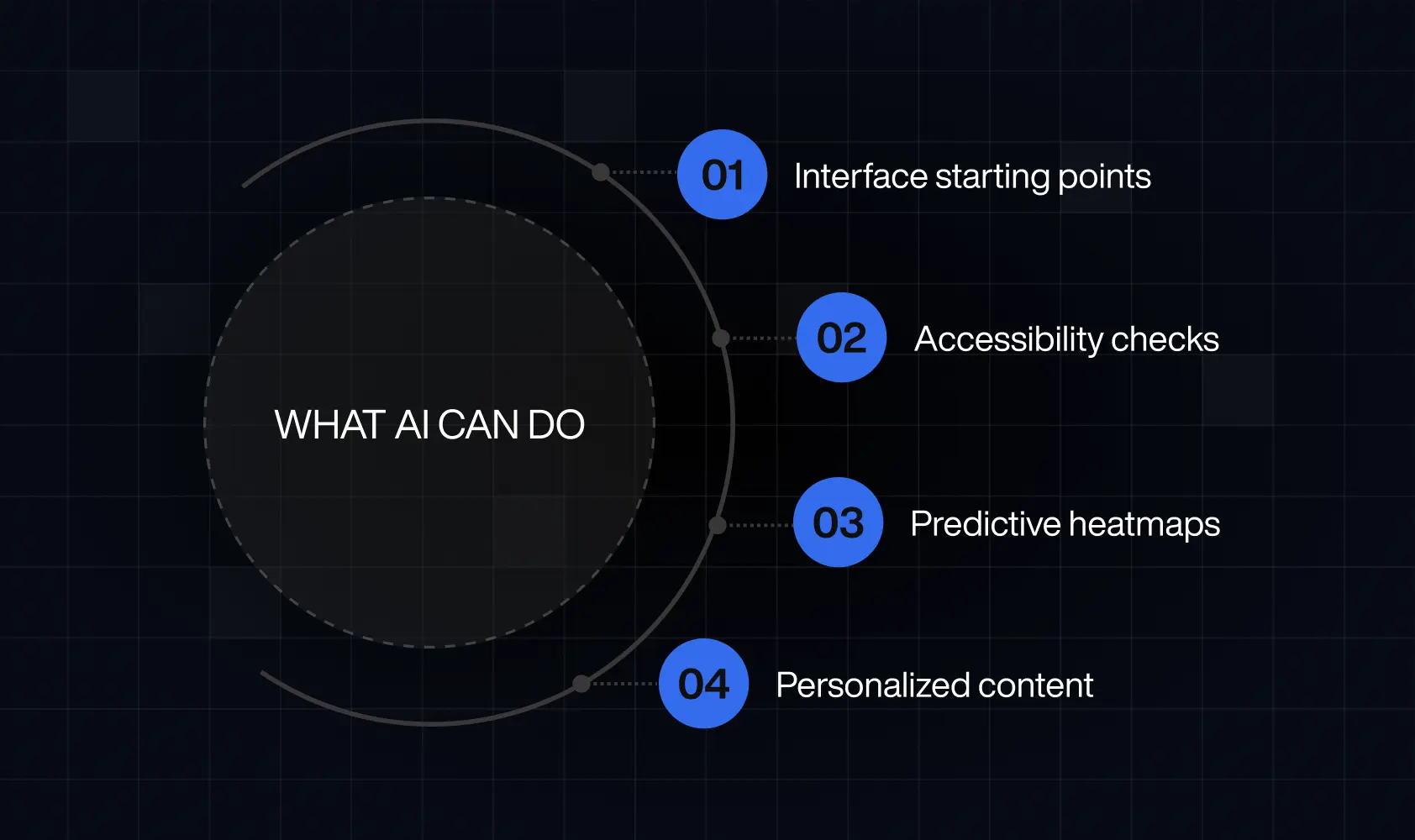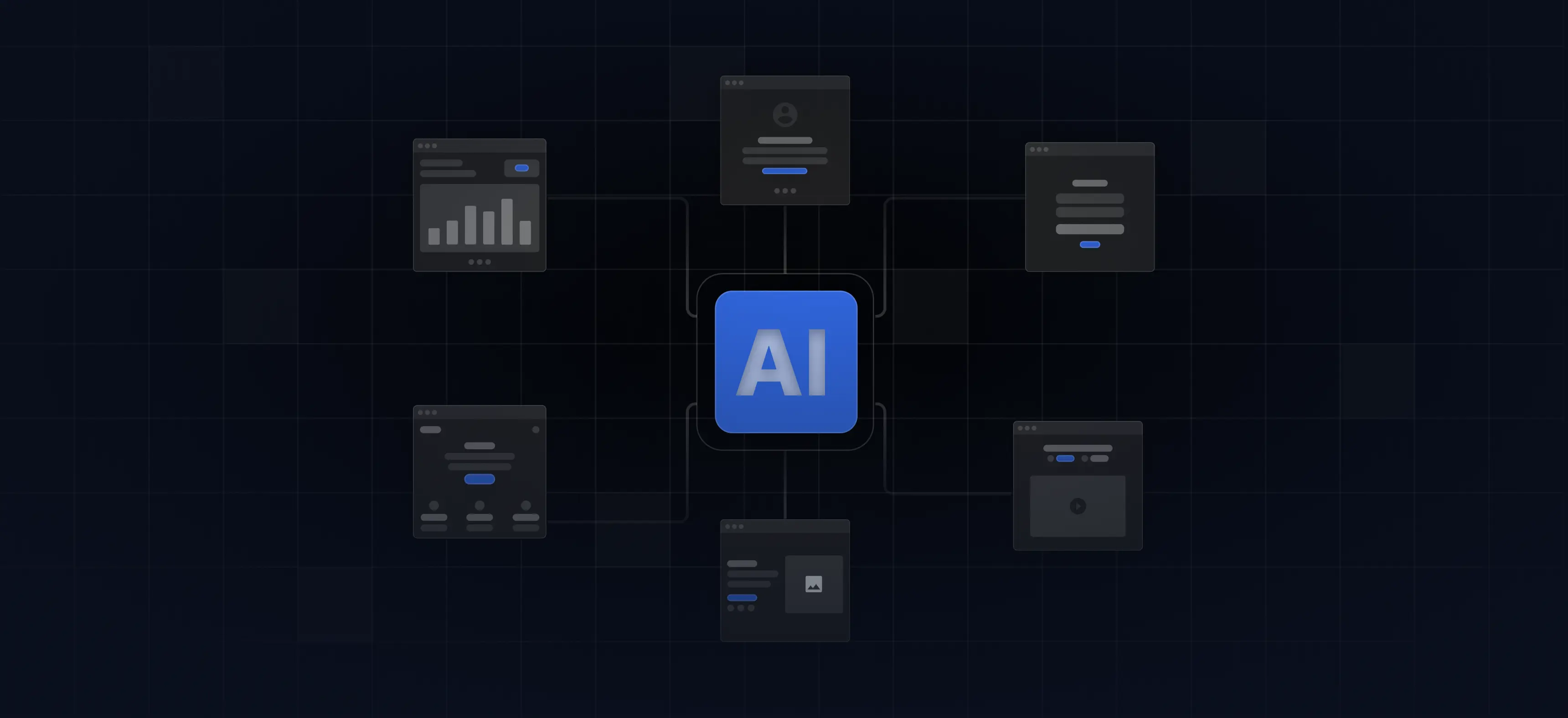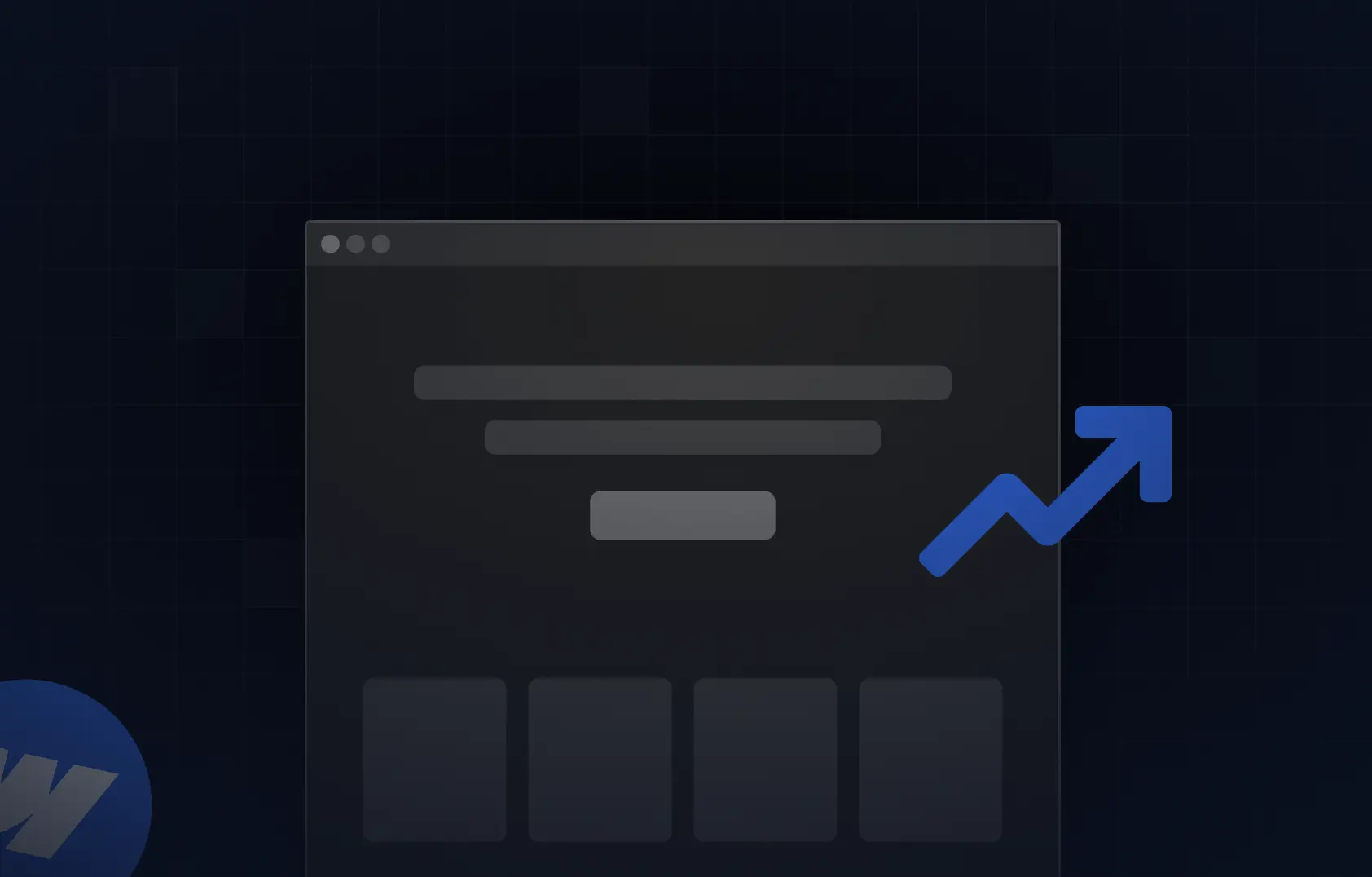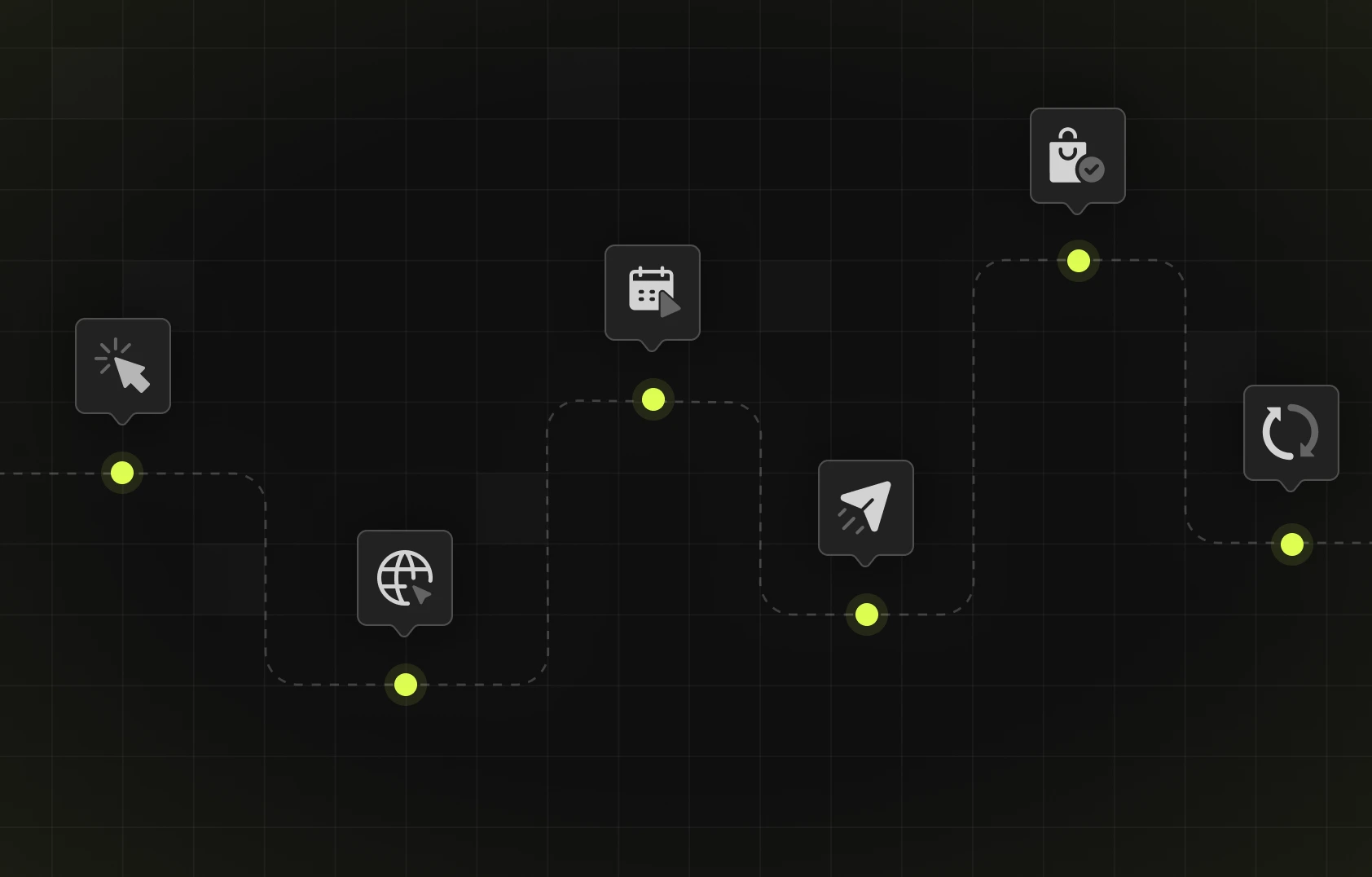Table of content
Summary:
AI in web design has moved from hype to hands-on reality. In many different spheres, it has become a significant assistant to human work.
- Designers play a key role in guiding AI outputs.
- In web design, AI speeds up workflows with tools like Figma AI, Webflow integrations, and automated testing.
- It can help designers with tasks such as wireframing, accessibility checks, predictive heatmaps, and real-time personalization.
- Designers benefit from faster prototyping, data-backed decisions, and rapid testing of variations.
- Tools worth trying now: Figma AI, Webflow + AI, Uizard, Attention Insight, and ChatGPT.
- Human skills remain essential, while AI works as an assistant.
- Ethical considerations matter, so designers still need to watch for bias and protect user data.
We’re all living in a time where AI has become a part of our everyday lives - even more so as each day goes by and new tools are developed. Naturally, it has already become a significant part of web design practice all around the globe. We can all agree that AI in design can’t be innovative and creative. However, there is no denying that AI is the next big shift in how websites are designed, tested, and optimized for users, the one that brings less guesswork and more precision. So, how is AI used in design nowadays, and how will it be used in the future? Let’s take a look.
From trend to transformation in web design
Do you remember how, at the beginning of the whole AI revolution, AI was just a buzzword that designers casually threw around? When it has come a long way and is now actively participating in how we shape custom web solutions. For individuals, teams, and agencies, artificial intelligence has become a working partner in day-to-day workflows, the one that’s speeding up the process and driving better results.
Take Figma’s AI features, for example. They can suggest layouts, clean up copy, or even generate design elements - and all that in merely seconds. The same goes for Webflow’s AI enhancements, which help designers and marketers structure content, optimize SEO, and streamline builds. If you opt for Webflow design and development, you can now do all that and forget about the many hours of manual tweaking. Even automated testing tools powered by AI are becoming standard, which is amazing, since they can catch UX issues before they ever reach users.
What is AI by design?
AI by design is the practice of intentionally integrating artificial intelligence in your work from the very beginning, rather than adding it as an afterthought. In this practice, AI is a core component, not just a feature. Although it’s not a dominant practice yet, it’s becoming increasingly popular as AI tools evolve.
Where AI is already changing the UX game?
Is there any AI for designing? Today, it’s not even a question. In 2025, we’ve developed some of the most practical AI applications. Here’s what AI can do now:
- Generate starting points for interfaces - this way, designers don’t have to build from scratch, but focus on refining details instead.
- Automating accessibility checks - it makes inclusive design easier to achieve.
- Showing where users are most likely to click or scroll - it can help teams fine-tune designs earlier, instead of waiting for post-launch analytics
- Personalizing content and CTAs based on user behavior - this way, users can see messaging and offers that actually resonate.

Designing faster, smarter - and with more data
Let’s just say that prototyping, which once took weeks to finish, can now be done in days. It’s possible with AI generating layouts, wireframes, and even content. Not only that, but decisions can be increasingly backed by real user data. It’s possible because AI tools are capable of pointing out behavior patterns and highlighting where users are most likely to struggle.
Testing is no longer a lengthy process either. Why? Because AI can now launch variations and measure results in real time. So, what did we get with combining web design with AI? The answer is faster design cycles and smarter, data-driven decisions.
AI in design - tools web designers should try today
With AI baked into more and more design platforms, knowing which tools to explore can save you hours of work. So, as always, we’re here to help. These are the tools you can start using right now to design smarter:
Skills web & UX designers should level up
We’ve already pointed out that AI takes over repetitive tasks. Therefore, the real value of designers comes from the skills that machines can’t replicate. So, what do web and UX professionals need to do to stay ahead? The answer is simple - they should focus on areas where human creativity and judgment make all the difference.
UX design strategy is one of them. Tasks such as understanding users, mapping journeys, and aligning design with business goals will always require human work. The same goes for storytelling through design. Visual choices, tone, and flow, when done right, create emotional impact that AI alone is incapable of delivering.
That being said, it’s also important for designers to accept the shift that AI has brought to the industry. It means that they should actively master AI-enhanced tools in order to make their work more efficient. The winning formula is clear - pairing human insight with AI efficiency.
Ethical considerations for AI in UX design
With great power comes great responsibility. As designers, it’s not enough to simply adopt AI. While we work on enhancing user-centred designs, it’s also important to be aware of the risks AI brings and make choices that protect users. Key areas to watch include:
- AI bias - automated design recommendations can reinforce stereotypes or overlook diverse user needs.
- Data privacy - personalization often relies on sensitive user information, so transparency and compliance with regulations are critical.
- Human touch - over-automated user journeys risk feeling cold and transactional.
As always, the key is in balance. Use AI to streamline workflows, but keep inclusivity and the user’s trust at the center.
The designer’s role in shaping AI-driven UX
It’s official - AI has become a big part of how products are built and experienced. However, it gives designers another critical responsibility. They need to shape how these technologies interact with people. AI is not actually smart; on its own doesn’t know how to make an experience accessible or, for example, brand-consistent
So, what should the designers’ role be? Rather than simply accepting what AI tools generate, designers must take a truly active role in directing and refining them. Here’s how:
- Give feedback - AI systems learn through iteration. By actively critiquing outputs (meaning pointing out what feels right and what doesn’t), designers can make tools produce better results over time.
- Set design standards - designers should establish clear principles that AI must follow
- Align with brand goals - without the right prompts and guidance, AI outputs may feel generic. That being said, designers should be there to ensure that visuals and tone stay true to the brand’s identity.
What the next 5 years of AI in web design could look like
Instead of static websites that look the same for everyone, it’s clear we’re moving toward ultra-personalized user experiences that adapt to each visitor. From where we’re standing, it’s highly possible that content, visuals, and interactions will shift based on individual preferences, behaviors, and context.
Keeping up with the new trend, interfaces will probably become far more dynamic. It would be great to see real-time UX adjustments that will allow different elements to adapt instantly in response to user behavior. Imagine a website that notices when you’re struggling to find information and rearranges itself to help. Amazing!
However, we predict that the most exciting shift will come from collaborative human–AI design systems. The change has already started, but we expect that designers will start to more actively co-create with AI.

Will AI replace CAD designers?
The web and UX design skills that matter the most, such as creativity, innovation, and empathy, can and will always remain uniquely human. So, is AI replacing designers? We wouldn’t say so. What it does, however, is make them faster and better equipped to handle complex projects. Designers who wish to live through this shift need to embrace AI as a collaborator rather than a competitor. Devolfs' team already knows it. Therefore, if you’re looking for a partner who understands extraordinary solutions that can come out form this type of collaboration, make sure to contact us.





%201.svg)






